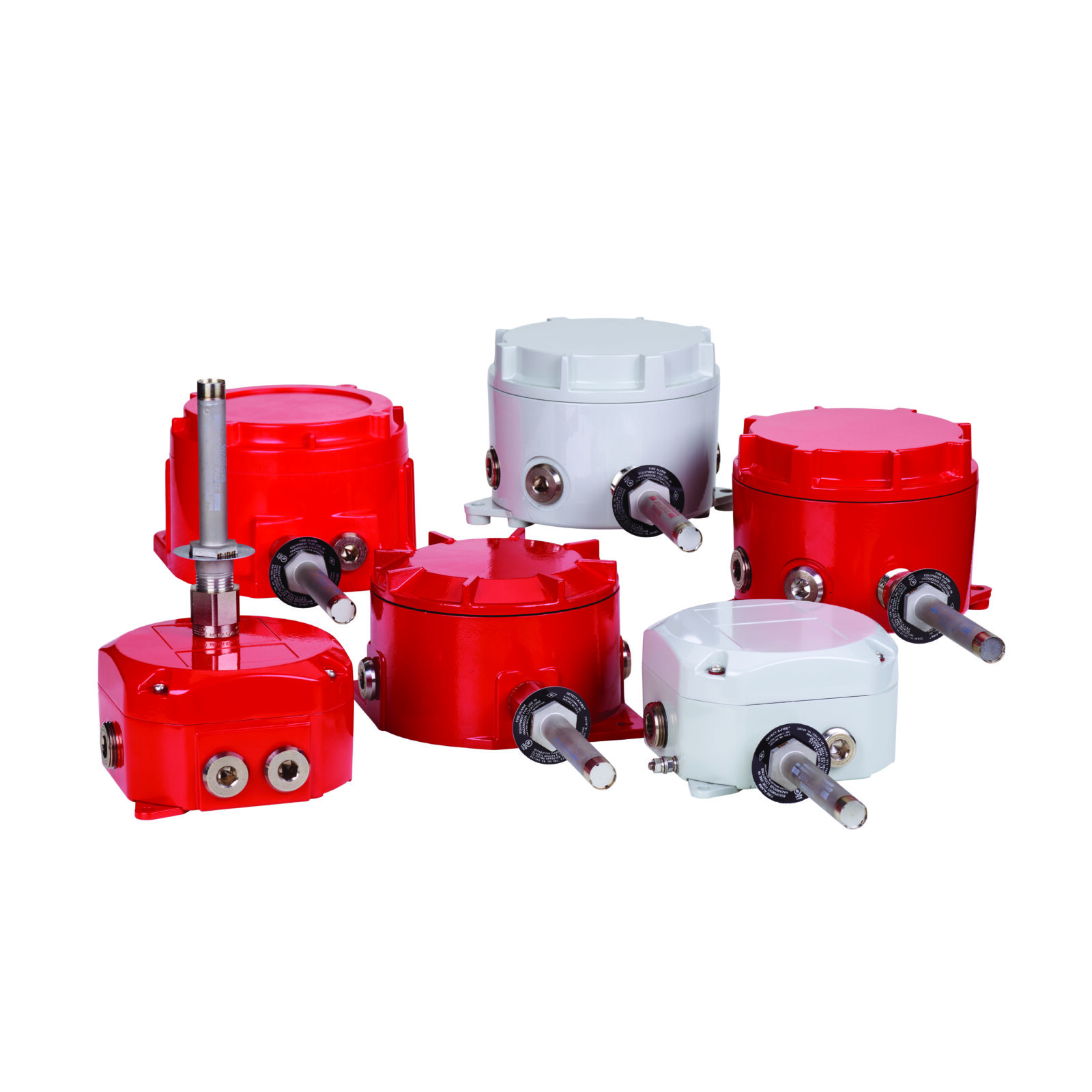The new solution for heat detection in hazardous areas.
LGM is delighted to announce the launch of E2S‘s new H1 range of heat detectors. Explosion proof, increased safety and intrinsically safe – a globally certified, comprehensive solution suitable for the harshest of environments.
Approvals include IECEx, ATEX, UL, cUL & ULC offering Class I/II Div 1, Ex db explosion proof and flame proof versions as well as Class I/II Div 2, Ex db eb increased safety and Zone 0 Ex ia intrinsically safe. Compliant to UL521 and CAN/ULC-S530.
The robust IP66/67, Type 4/4X corrosion proof termination enclosures are available in GRP (glass reinforced polyester), 316L stainless steel and LM6 marine grade copper free aluminium. With innovative features such as the E2S Ex LED indicator module and the multi position mounting bracket, the E2S range of D1xH1, STExH1, GNExH1 and D2xH1 heat detectors offer a robust and reliable source for alarm initiation in the most hazardous and demanding of applications.
What is a Hazardous Area Heat Detector?
Heat detectors give you an early warning of an increased in temperature before a fire. Using the correct heat detector will immediate indicate an over heat allowing preventive actions to be taken before catastrophic damage can occur.
There is a variety of heat detectors from standard conventional or addressable ‘spot’ type detectors to more sophisticated Linear Heat Detection.
Unlike smoke detection, which technology relies on sampling air in some manner and therefore have to be built to less robust standards, heat detectors can be used in very harsh enviornments.
An area that includes a possibly explosive mixture of dust and/or gas is known as hazardous area. Any electronic product used within a hazardous area must be certified safe to do so.
The H1 Heat Detectors are globally certified and offer both intrinsically safe and explosion proof methodolgy.
What type of heat detector should I use?
LGM can offer a full spectrum of heat detectors. Our range includes marine approved, Linear Heat Detection, spot detectors and now a full range of hazardous area heat detectors with the new H1!
What Alarm temperature should I use?
Regardless of type it is essential that you select the correct alarm temperature for your application. It is recommended that you select a heat detector that is 20C above your maximum expected ambient temperature. This allows is high enough to stop heat detectors alarming on particular warm days or small heat spike but low enough to give you a quick alarm notification in the event of an over heat.
The H1 range has options from 60C to 385C, ensuring you will always have the right alarm temperature.
To find out more about LGM’s range of heat detectors and get your quote on the new E2S H1 Heat Detectors, please email sales@lgmproducts.com



